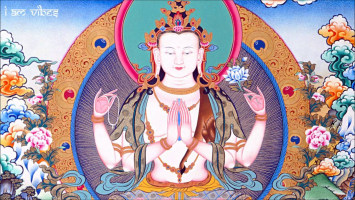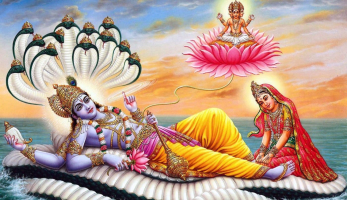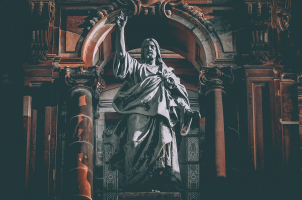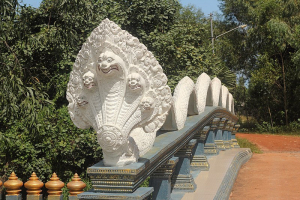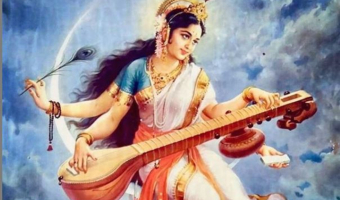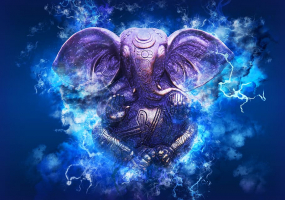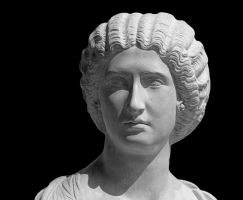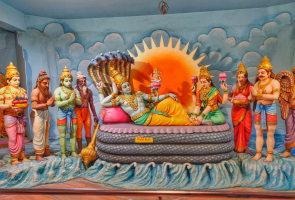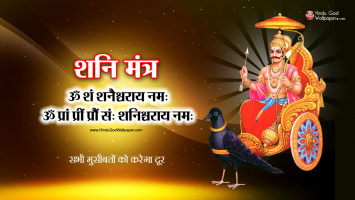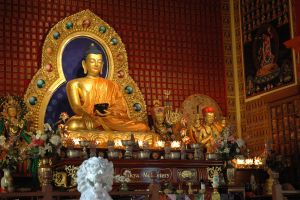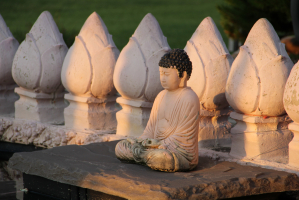Top 10 Most Powerful Buddhist Gods
Buddhism venerates a diverse range of divine beings in a variety of ritual and popular contexts. Here are the most powerful Buddhist gods.... read more...
-
Siddhartha Gautama, the historical founder of Buddhism and the future Buddha, is an enigmatic figure. Siddhartha Gautama lived in north India around 563 BCE and was born into a noble family, according to researchers. His mother, Maha Maya, had a foretelling dream in which an elephant entered her womb.
Siddhartha Gautama appeared from beneath her right arm after ten moons. Siddhartha Gautama lived in extreme luxury in his family's palace, shielded from the outside world and its ugliness. He married the princess Yashodhara when he was sixteen, and she bore him a son.
When Siddhartha Gautama was twenty-nine, he went on a carriage ride outside his palace's walls and witnessed the world's heinous sufferings in awe. He witnessed hunger, rage, greed, arrogance, evil, and so much more, and he was left wondering what caused these calamities and how they could be alleviated. At that point, against his father's wishes, he gave up his life of luxury, power, and prestige and embarked on a journey to find a lasting cure for human suffering.
His first step was to become an aesthetic, a person who foregoes all worldly pleasures, including food. But he soon realized that this, too, did not result in true happiness. And, having already lived a life of incredible material wealth and luxury, he knew this wasn't the way to go. Siddhartha Gautama came to the conclusion that true happiness must be found somewhere in the middle, a doctrine known as "The Middle Way."
Siddhartha Gautama sought a solution to human happiness through meditation and introspection. Then, one day, while sitting under a tree, he realized his true nature and awoke to the truth of all reality, transforming him into an enlightened being capable of living a truly happy and peaceful life. From there, the Buddha began sharing his experience, spreading his wisdom, and assisting others in escaping their own suffering.Siddhartha Gautama developed doctrines such as The Four Noble Truths, which describe the causes of human suffering and how to alleviate them, as well as the Eightfold Path, which is essentially a code for living that allows one to face life's pain and live happily.
Many people thought he was a god because of his wisdom and charming personality, but Siddhartha Gautama consistently insisted that he was not and should not be worshiped as such. Nonetheless, a large number of people did, and after his death, his many followers disagreed on how to proceed. This resulted in the formation of numerous "sects" of Buddhism, each of which incorporated the Buddha's teachings in different ways, and which gave rise to a variety of entities.
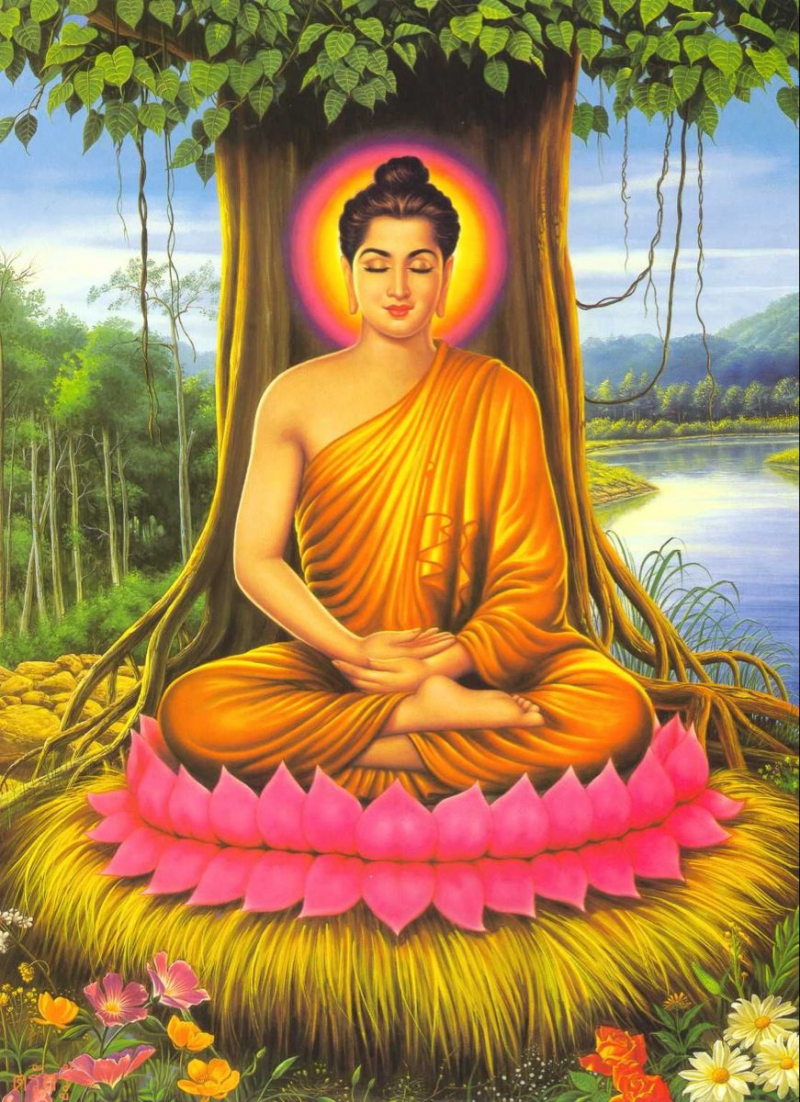
Image by Human History on Pinterest Video via Binogi channel on Youtube -
Maitreya is the prophesied Buddha who will appear on Earth and achieve complete enlightenment. Maitreya is presently a bodhisattva residing in the Tushita heaven who will descend to earth to preach anew the dharma (“law”) when the teachings of Gautama Buddha have completely decayed.
Maitreya is the earliest bodhisattva, around whom a cult developed, and is mentioned in the scriptures from the 3rd century CE. He was accepted by all schools of Buddhism and is still the only bodhisattva generally honored by the Theravada tradition. Maitreya's mission is to remind humans of the forgotten Dharmas. The Dharma is a fundamental concept in several religions that originated in the Indian subcontinent and can be translated as cosmic law.
Maitreya translates as "friend" in Sanskrit. The name Maitreya is derived from the Sanskrit maitr (“friendliness”). In Pali, the name becomes Metteyya; in Chinese, Milefo; in Japanese, Miroku; and in Mongolian, Maidari; in Tibetan, the bodhisattva is known as Byams-pa (“Kind” or “Loving”). His worship was especially popular from the 4th to the 7th century, and his images are found throughout the Buddhist world; many of them beautifully convey his characteristic air of expectancy and promise.
Maitreya is represented in painting and sculpture both as a bodhisattva and as a Buddha. Maitreya is typically depicted seated with his feet on the ground or crossed at the ankles, dressed as a monk or royalty. Maitreya is striving for enlightenment among Theravada School followers. Maitreya appears most frequently alongside Siddhartha Gautama in the earliest iconographic representations. According to the scriptures, Maitreya will be the historical Buddha's (Siddhartha Gautama or Sakyamuni Buddha) successor as the founder of Buddhism.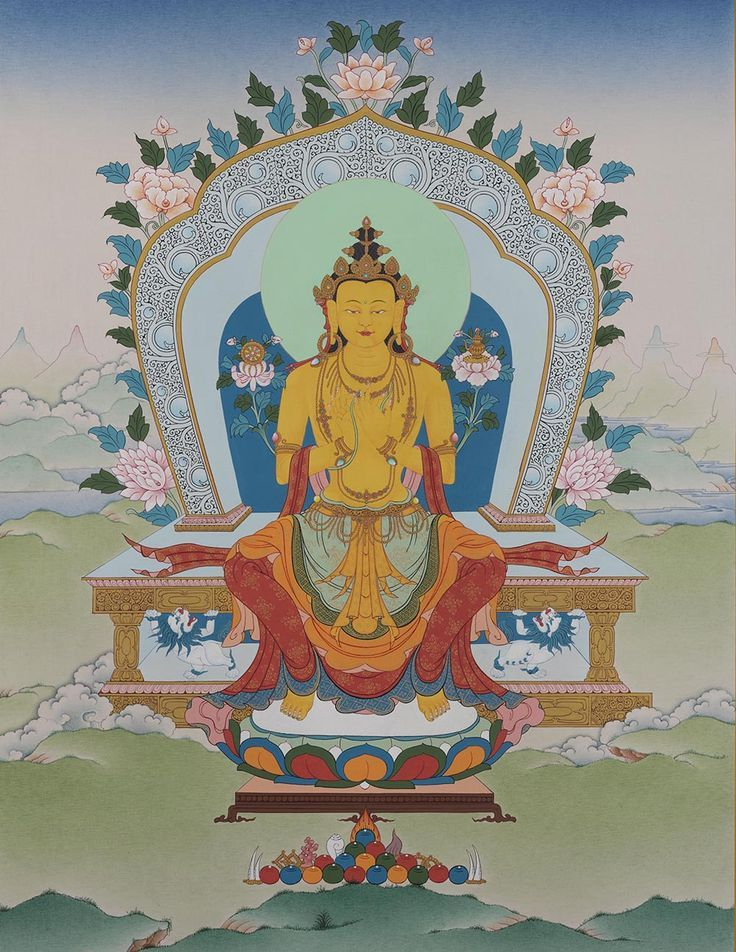
Image by Enlightenment on Pinterest Video via LMCARQUITECTOS channel on Youtube -
Vairochana, one of the primordial Buddhas, is Gautama's first manifestation and embodies the supreme illumination of wisdom. He is thought to be a universal Buddha from whom all others emanate. Voirachana, as the Primordial Buddha, appears in several Buddhist texts as one of the most revered versions of Gautama and is thought to be the direct embodiment of the historical Siddhartha himself.
Vairochana (Sanskrit: "Illuminator"), also known as Mahavairochana ("Great Illuminator"), is considered the supreme Buddha by many Mahayana Buddhists in East Asia, including Tibet, Nepal, and Java. Vairochana, or Mahavairochana, is regarded by some Buddhists as a separate being from the five "self-born" Dhyani Buddhas, one of whom is known as Vairochana.
Vairochana is the primary object of worship among Japan's Shingon sect and is revered as the source of the entire universe. In Japanese, he is known as Dainichi Nyorai ("Great Sun Buddha") or Roshana; in Chinese, he is known as Piluzhena; and in Tibetan, he is known as Rnam-par-snang-mdzad or Rnam-snang ("Maker of Brilliant Light").When depicted as one of the "self-born" Buddhas, as he is in Nepali, Tibetan, and Javanese art, Vairochana takes the throne and is frequently regarded as the progenitor of the other four Dhyani Buddhas or the Adi Buddha himself. Vairochana is depicted in paintings with his hands in the dharmachakramudra ("teaching gesture"). Vairochana statues depict him sitting in the lotus position in deep meditation. Noble materials, such as gold or marble, are frequently used to represent him.
Vajradhatvishvari, or Tara, is Vairochana's consort; his family is Moha; his mount is the dragon (or lion); his symbol is the chakra ("wheel"); his skandha ("personality component); his rupa ("matter"); his syllable is an or om; his element is space; his sense perception is hearing; his sense organ is the ear; and his location in the human body is the head.
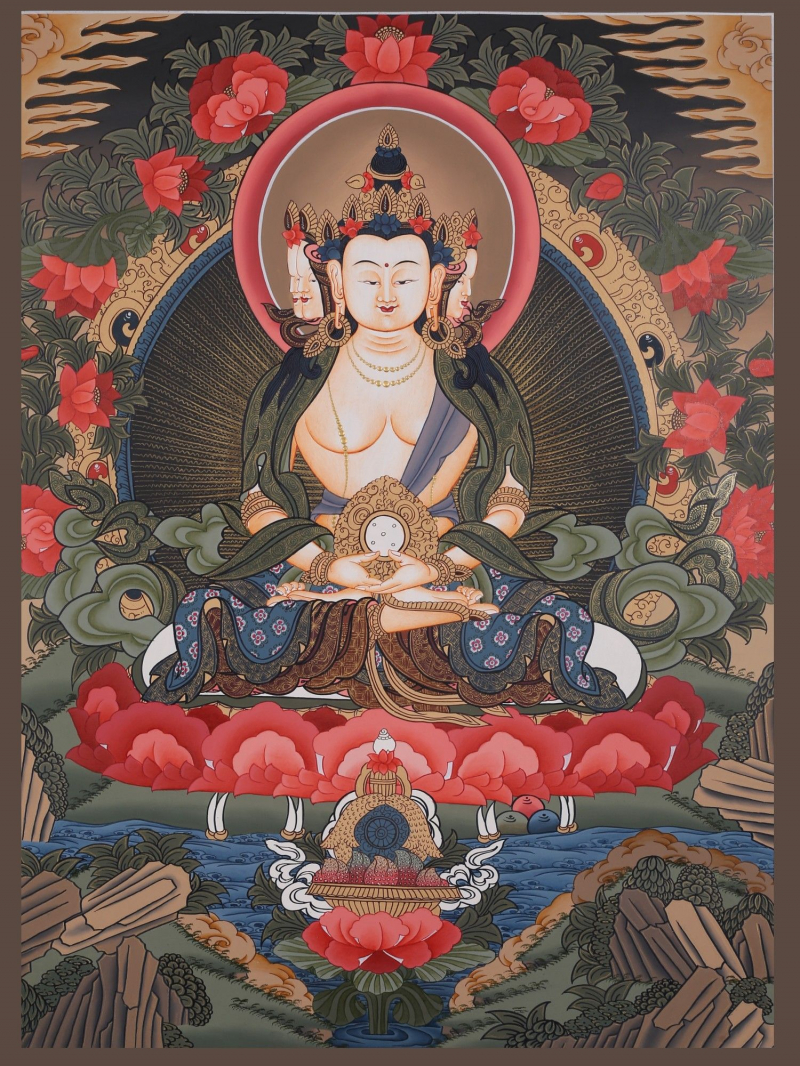
Image by Exotic India on Pinterest Video via Masters of Buddhism channel on Youtube -
Akshobhya, Buddha (Tibetan: mi kyu pa, sang gye): a major Buddha in Vajrayana Buddhism associated with the eastern quarter of a mandala, and a minor Buddha in Mahayana Buddhism's sutra tradition, residing in the Abhirati Buddhafield. Akshobhya represents consciousness as a reality-derived element. Akshobhya is mentioned in the earliest mentions of the Buddhas of Wisdom. According to written records, a monk desired to practice meditation. He vowed not to harbor any ill will toward any being until he attained enlightenment. When he succeeded, he was renamed Buddha Akshobhya.
Those who practice Akshobhya, which means "unshakeable" or "immovable" in Sanskrit, meditate in complete stillness. Akshobhya is one of many Buddhas found in Mahayana and Vajrayana Buddhism. He is mentioned in the Mahayana Sutras of Northern Buddhism as well as Tantra literature. His images and sculptures depict him in a blue-black body with three robes, a staff, a jewel lotus, and a prayer wheel, flanked by two elephants.
Although a minor figure in the Sutras, Akshobhya is a major figure in the Tantras, playing an important role in Vajrayana Buddhism at all levels. In paintings, he is easily identified by his Buddha-like form, blue body color, and left hand holding an upright vajra scepter. There are no other Buddhist figures with the same iconographic appearance as this one. Tantric depictions of Buddhas frequently include jewel ornaments and a crown.
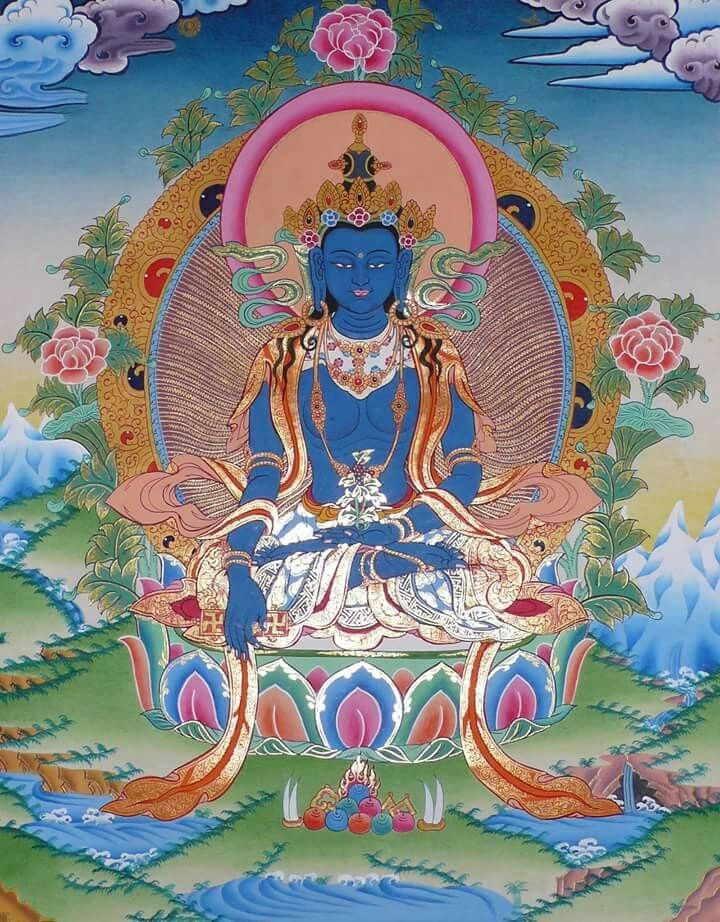
Image by Tommy Beauty Pro on Pinterest Video via Masters of Buddhism channel on Youtube -
Ratnasambhava is a name of Majur (the embodiment of non-dual knowledge) and, along with other names, forms the core essence of the Majurnmasagti. The Nmamantrrthvalokin gives the practitioner a sdhana (a meditative practice') to turn these names into mantras. These mantras are chanted for the benefit of all beings and then placed and contemplated in the Vajradhtu-mahmaala, which is an extended version of the Vajradhtu-maala.
Ratnasambhava is one of the Dhyni-Buddhas in Vajrayana or Tantric Buddhism. The name Ratnasambhava (Tib. Rinchen Jungné) means "Source of Jewels" or "Unobstructed Accomplishment." He is the Ratna or Jewel family's Buddha and presides over the Buddha field known as rmat (Tib. Paldangdenpa), which translates as "Realm of Splendor" (or Magnificence) and is located to the south.
Ratnasambhava is frequently depicted with a cintmai (wish-fulfilling) jewel in his hand and his hand in the mudra of giving. He is described as a glowing yellow being who embodies wealth, generosity, and abundance. His mudr is varada, his vhana is a lion, and his symbol is a jewel. Vajradhtvivar is the name of his akti, or female counterpart (spiritual consort), and Ratnapi is the name of their Bodhisattva offspring.
Ratnasambhava is the embodiment of equality wisdom, transforming selfish pride into qualities of equality and equanimity. Rathnasambhava is associated with equanimity and equality. His mandalas and mantras aim to cultivate these qualities while removing greed and pride. Rathnasambhava, who is associated with feelings and senses and has a connection with consciousness, promotes Buddhism by perfecting knowledge.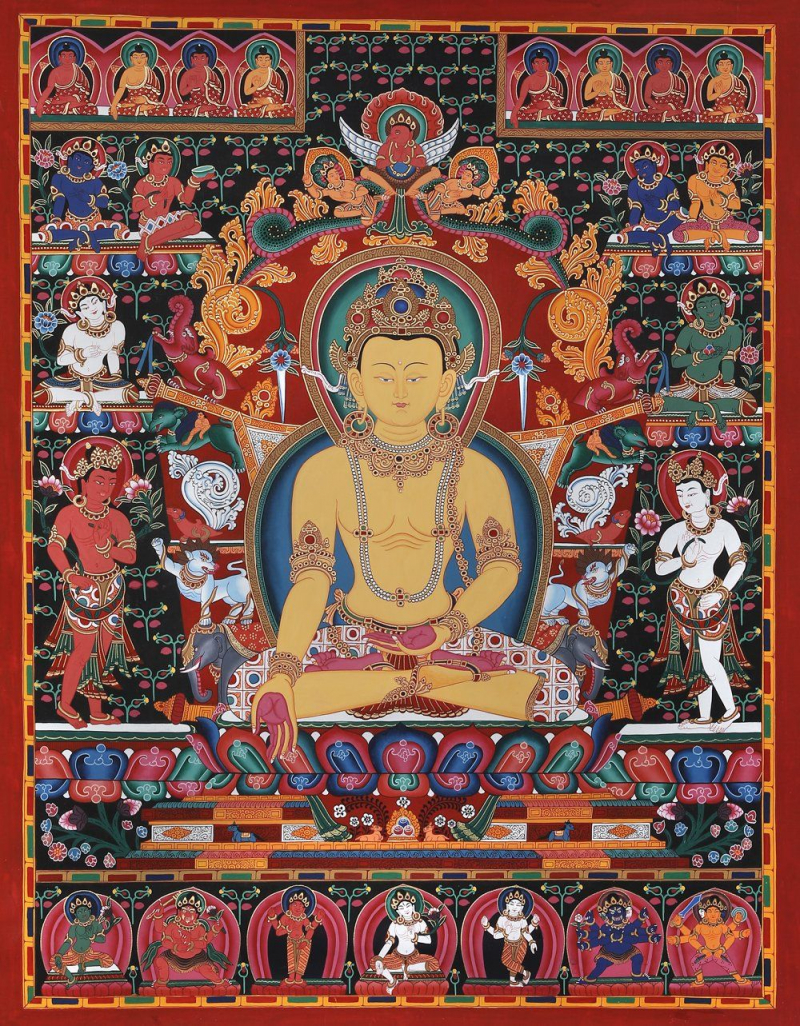
Image by Exotic India on Pinterest Video via Masters of Buddhism channel on Youtube -
Amitabha (Sanskrit for "infinite light"), also known as Amitayus ("infinite life"), Japanese Amida, and Chinese Emituo Fo, is the great savior Buddha in Mahayana Buddhism, particularly in the so-called Pure Land sects. Amitabha is associated with discernment and purity.
Amitabha has longevity and recognizes that every phenomenon in life is either empty or the result of illusions. This perception results in a lot of light and life. In some Buddhist texts, Amitabha appears as a former king who abdicated his throne after learning the Buddhist teachings. The iconography frequently depicts Amitabha with his left arm bare and his thumb and forefinger linked.
According to the Sukhavati-vyuha-sutras (the fundamental scriptures of the Pure Land sects), many ages ago, a monk named Dharmakara made a number of vows, the 18th of which promised that, upon his attaining Buddhahood, all who had faith in him and called upon his name would be reborn in his paradise and would reside there in bliss until they attained enlightenment. Having accomplished his vows, Dharmakara reigned as the Buddha Amitabha in the Western Paradise, known as Sukhavati, the Pure Land—a universe existing outside reality that embodied the utmost perfection.
Devotion to Amitabha arose in China around 650 CE and spread to Japan, where it resulted in the formation of the Pure Land school and the True Pure Land school in the 12th and 13th centuries, both of which have large followings today. The raig paintings of Japan's late Heian period beautifully depict Amitabha's Pure Land and Amitabha descending to welcome the newly dead (897–1185).
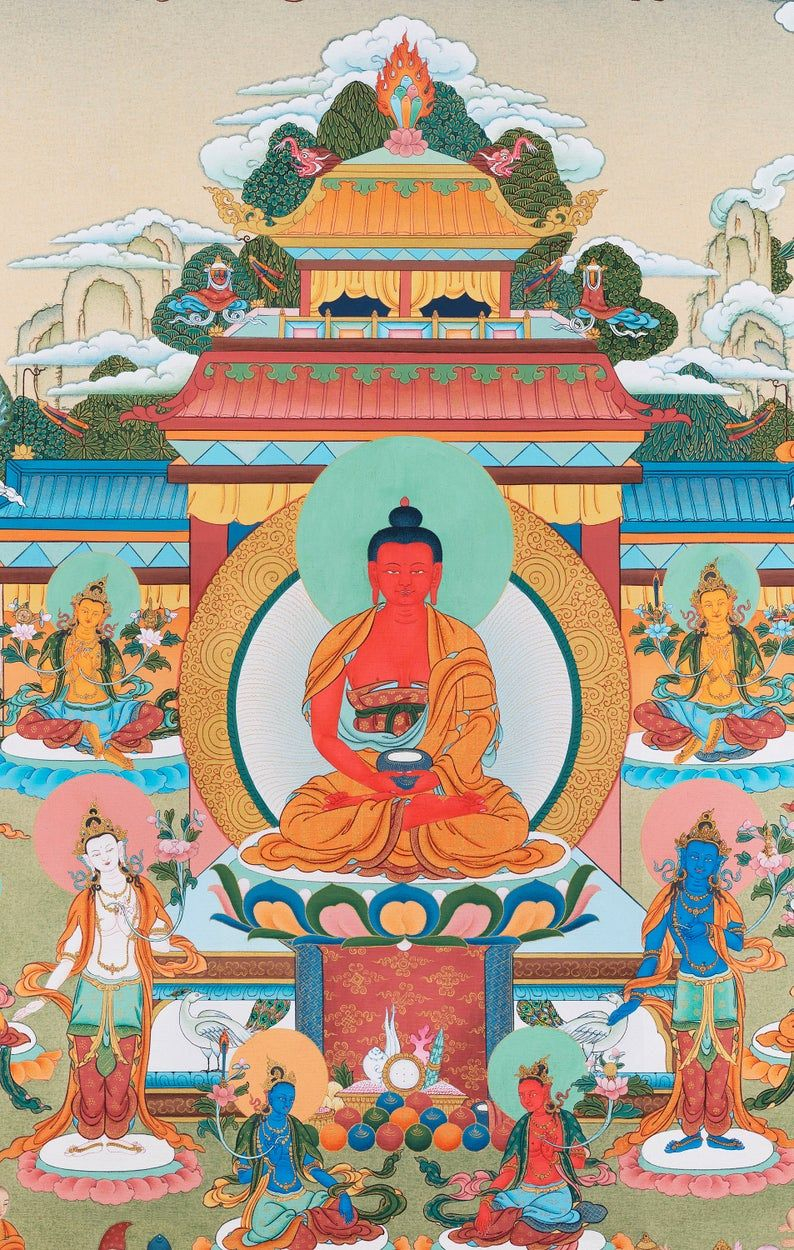
Image by Etsy on Pinterest Video via Dharmachakra Wheel of the Dharma channel on Youtube -
Amoghasiddhi is one of the Five Wisdom Buddhas who preside over the cardinal directions' heavens, with his realm to the north of Buddhism's Mahayana and Vajrayana traditions. He is associated with the completion of the Buddhist path as well as the annihilation of the poison of envy. His name translates to "Unfailing Accomplishment." Tara, which means Liberator, is his consort, and his mounts are garudas. He is a member of the Karma family, whose symbol is the double vajra.
Amoghasiddhi embodies the conceptual mind, the highest abstraction, and promotes the appeasement of all evils by facing them with courage. The conceptual (Skt: samskara) skandha, or conceptual mind, is associated with Amoghasiddhi (as opposed to the non-conceptual or sensational mind). This Buddha strives for the reduction of evil and the annihilation of envy and its poisonous influence. His actions in support of Buddhist paths are acts of pacification.
Amoghasiddhi, who sits on a lotus throne surrounded by bodhisattvas, holds his right hand in abhaya mudra, a protective gesture for devotees. The yogi position, or mudra, he employs symbolizes the fearlessness with which he and his devotees confront the poisons and delusions that lead Buddhists astray. It's common to see him painted green and associated with air or wind. The moon is also associated with him.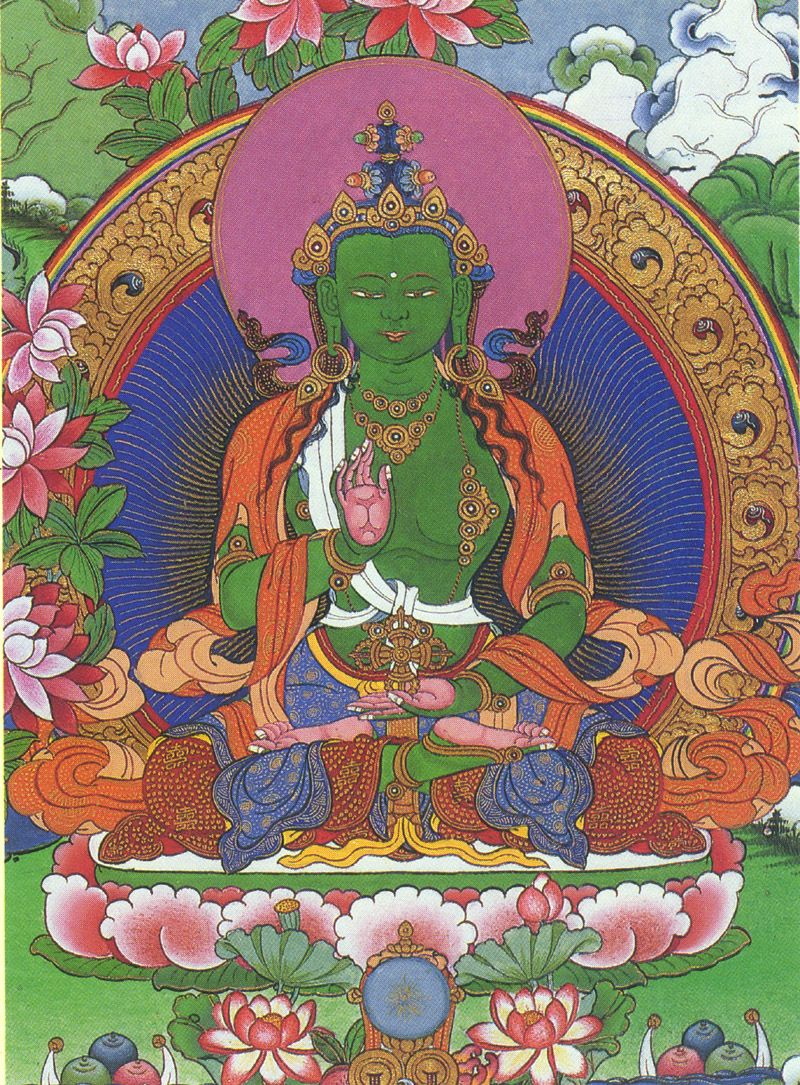
Image by Tumblr on Pinterest Video via Masters of Buddhism channel on Youtube -
Guanyin is a compassion-related Bodhisattva. She is the East Asian counterpart to Avalokitesvara and has been adopted by other Eastern religions, including Chinese folk religion. Jesuit missionaries in China first referred to her as the "Goddess of Mercy" or "Mercy Goddess." Guanyin is an abbreviation for Guanshiyin, which translates as "The One Who Hears the Sounds of the World." Guanyin's attainment of Buddhahood is commemorated on the 19th day of the sixth lunar month.
Guanyin, the Goddess of Mercy, is a highly revered goddess in China. Buddhists believe that when someone dies, Guanyin places them in the lotus flower's heart. She is the most popular goddess in Buddhism, a performer of miracles who draws those in need of her assistance.
Many large Buddhist temples have been dedicated to Guanyin by her devotees. Even today, thousands of pilgrims visit these temples, particularly in Korea and Japan. Tradition has it that Guanyin wears white robes and sits in the lotus position with her legs crossed. With a palm facing the worshiper, it represents the moment Buddha began turning the wheel of learning.
East Asia has several Guanyin pilgrimage sites. Putuoshan is the most important pilgrimage site in China. In Korea, there is a Guanyin pilgrimage to 33 temples, including Naksansa. There are several Guanyin pilgrimages in Japan. The Saigoku Kannon Pilgrimage, a pilgrimage through 33 temples with Guanyin shrines, is the oldest of them.
Guanyin is revered by all Buddhist traditions and can be found in most Tibetan temples under the name Chenrézik. Guanyin is also revered and worshiped in Nepalese temples. One such example is the Hiranya Varna Mahavihar in Patan. Guanyin can also be found in Thailand's Temple of the Emerald Buddha, Wat Huay Pla Kang (where the huge statue of her is often mistakenly referred to as the "Big Buddha"), and Burma's Shwedagon Pagoda. Guanyin statues are a popular subject in Asian art, and can be found in the Asian art sections of most museums around the world.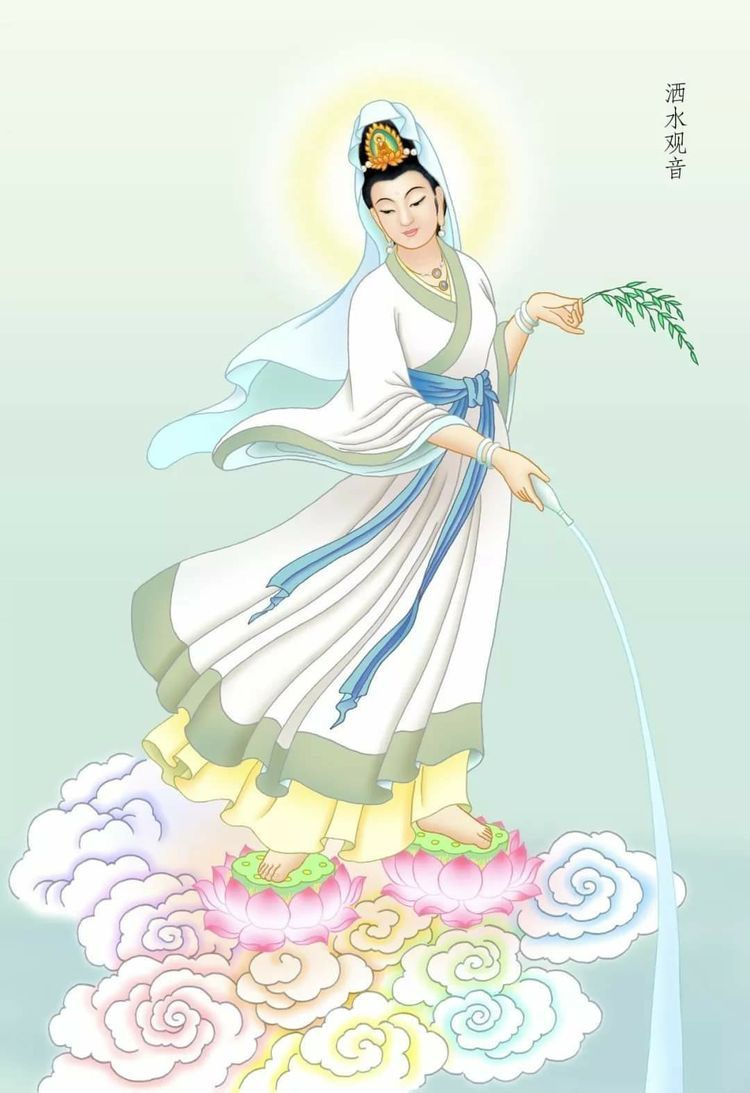
Image by Chien Chai Lye on Pinterest Video via Maya van der Meer channel on Youtube -
Samantabhadra (lit. "Universal Worthy", "All Good") is a great bodhisattva in Buddhism associated with practice and meditation. In Mahayana Buddhism, he is part of the Shakyamuni Triad, which also includes Shakyamuni Buddha and the bodhisattva Majur. He is the patron of the Lotus Sutra and, according to the Avatamsaka Sutra, made the ten great vows that form the foundation of a bodhisattva.
Samantabhadra is not constrained by time, space, or physical conditions. Samantabhadra is not a colored being with two eyes, etc. Samantabhadra is the unity of awareness and emptiness, the unity of appearances and emptiness, the nature of mind, natural clarity with unending compassion - that is Samantabhadra from the beginning.
In Japan, this bodhisattva is known as Fugen and is highly revered in Tendai and Shingon Buddhism. In Chinese Buddhism, Samantabhadra is known as Pxián and is associated with action, whereas Majur is associated with praj (transcendent wisdom). Unlike his more popular counterpart Majur, Samantabhadra is rarely depicted alone and is usually found in a trinity on the right side of Shakyamuni, mounted on a white elephant. Some believe that Samantabhadra's white elephant mount was the same elephant that appeared to the Buddha's mother, Queen Maya, to herald his birth.
Samantabhadra is also the name of the Adi-Buddha, who is frequently depicted in indivisible union (yab-yum) with his consort, Samantabhadra, in the Nyingma school of Tibetan Buddhism. He is one of the Eight Herukas of the Nyingma Mahayoga and is known as Vajramrtra in wrathful form, but this Samantabhadra buddha and Samantabhadra bodhisattva are not the same.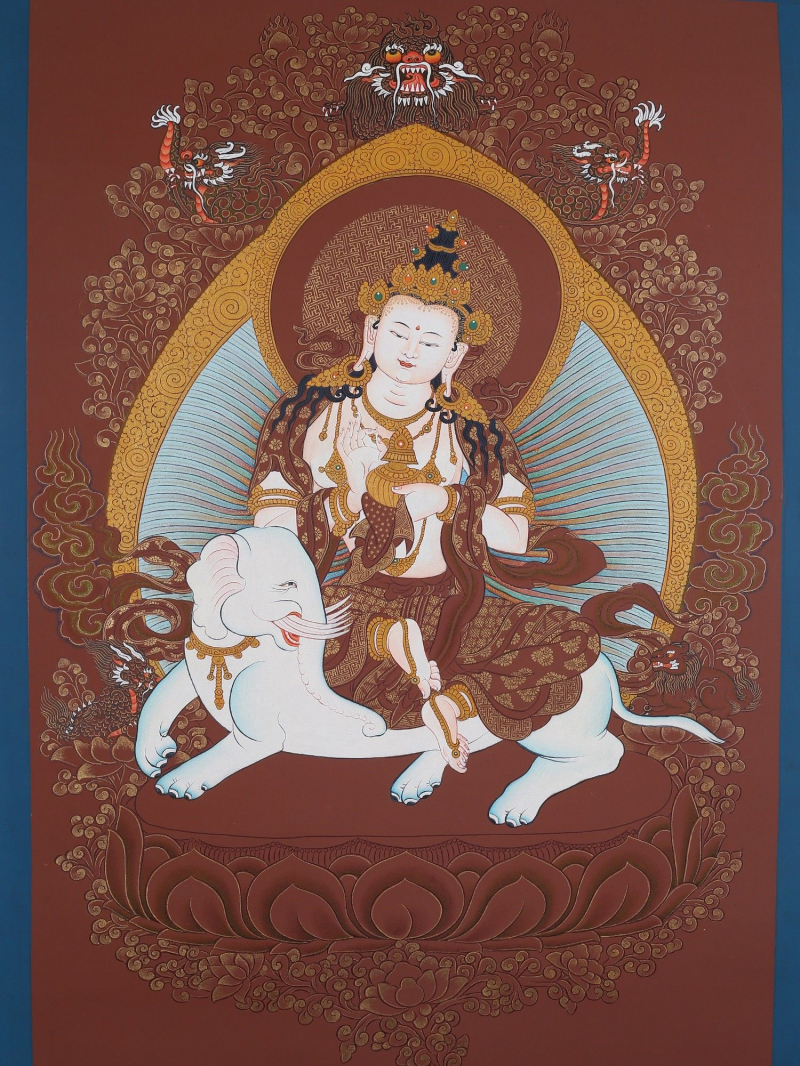
Image by Exotic India on Pinterest Video via Pure Lotus channel on Youtube -
In Mahayana Buddhism, Manjushri is a bodhisattva associated with praj (wisdom). In Sanskrit, his name means "Gentle Glory." He is the embodiment of transcendent wisdom. Manjushri is also known as Manjusrikumarabhuta, which means "Manjushri, Still a Youth" or, less literally, "Prince Manjushri." Manjushri is also known as Manjughosa.
Buddhist theologians identified Manjushri as the oldest Bodhisattva mentioned in the ancient sutras, which elevates him to a position of high honor. He resides in one of the Buddhist pantheon's two purest lands. As he progresses toward full Buddhahood, his name comes to mean "Universal Sight."
Manjushri is depicted as a male bodhisattva wielding a flaming sword in his right hand, representing the realization of transcendent wisdom that cuts down ignorance and duality. The scripture supported by the padma (lotus) held in his left hand is a Prajpramit stra, representing his attainment of ultimate realization through the blossoming of wisdom. Manjushri is frequently depicted riding on a blue lion or sitting on lion skin. This represents the use of wisdom to tame the mind, which is compared to riding or subduing a ferocious lion.
Manjushri's sword is sometimes replaced with a ruyi scepter in Chinese and Japanese Buddhist art, particularly in depictions of his Vimalakirti Sutra debate with the layman Vimalakirti. The first Chinese representation of a ruyi, according to Berthold Laufer, was in an 8th-century Manjushri painting by Wu Daozi, where it was held in his right hand instead of the usual sword. A ruyi was occasionally represented as a Padma with a long stem curved like a ruyi in subsequent Chinese and Japanese paintings of Buddhas.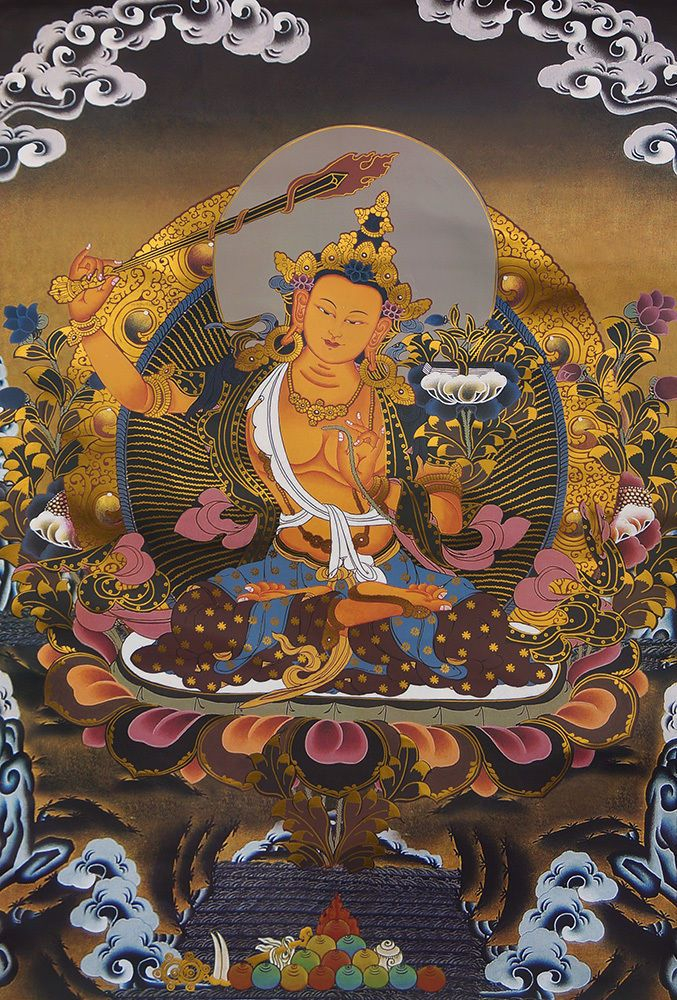
Image by Guruji Samadhi on Pinterest Video via Dharmachakra Wheel of the Dharma channel on Youtube













